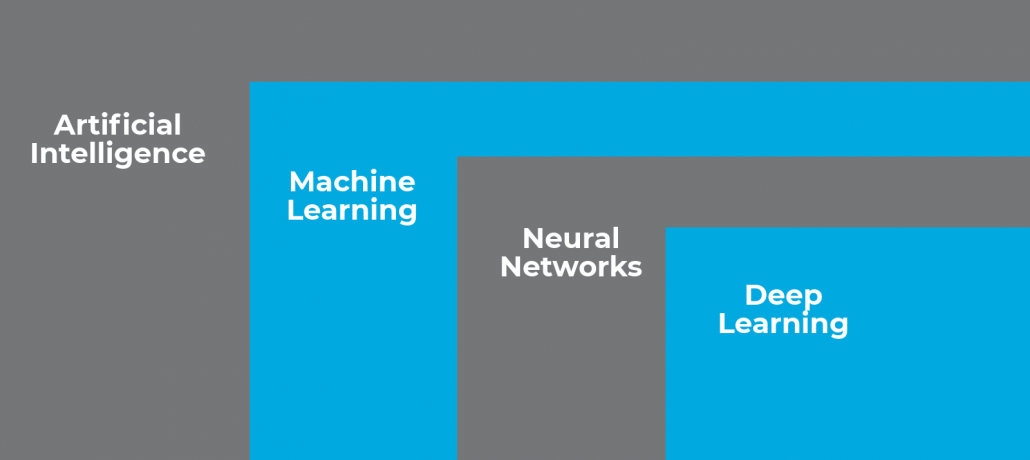Artificial Intelligence & Machine Learning explained
The term artificial intelligence is omnipresent in the media and most people have a general idea of what it means. More complex, however, is the distinction between related technical terms such as machine learning, deep learning, and artificial neural networks, which are often incorrectly used as synonyms – even by practitioners We want to shed some light on this topic and explain differences and similarities between these technologies.
Artificial Intelligence
Artificial intelligence (AI) is the most extensive topic and can be seen as an umbrella term for the concepts mentioned above. Artificial intelligence is a branch of computer science and deals with the imitation of certain aspects of human intelligence and behavior. AI refers to agent systems aiming to accomplish a particular objective without being bound by predefined rigid rules. This means they can react appropriately to unpredictable or unfamiliar input data.
AI can be divided into general (“strong”) and specific (“weak”) intelligence. By approximating human intelligence, general AI can be used to address a large variety of problems. Specific AI solutions, on the other hand, are only suitable for one or a small set of tasks, however, for these tasks they are very efficient, sometimes even more so than a human.
Machine Learning
The term AI is often used improperly instead of “machine learning” (ML) or “learning systems”. Machine learning refers to methods and processes able to recognize and learn certain rules in data or behavior patterns independently. ML, therefore, is an important tool for the realization of AI systems. Machine learning algorithms learn a specific behavior through “training”. For this purpose, high quality training data is needed. Trained algorithms can then be used to tasks such as classification, prediction, clustering and more.

Deep Learning and Neural Networks
Deep Learning (DL) is a special field within machine learning. Artificial neural networks are based on artificial neurons that imitate human brain functions. These networks consist of countless neurons that are arranged in many configurations, often in several layers, and can be interconnected. If such a network consists of a particularly large number of neurons and/or many layers, it is called a “deep” network. Deep networks are very good at complex pattern recognition tasks, such as those found in signal processing applications, that perform the recognition and classification of objects in images or speech recognition.
In recent years, deep learning applications have attracted a great deal of media attention, and often outperform human cognitive abilities.
This was made possible due to two developments:
- Increasing availability of low-cost computing power (needed for realizing artificial neural networks) with a compact design,
- Availability of large sets of high-quality training data for different tasks.
The Role of Mission Embedded
We have years of experience developing performant embedded systems for a variety of applications using state-of-the-art technologies. In our projects we utilize machine learning and deep learning concepts on a daily basis and have successfully integrated them in many customer products.
In addition to the development of hardware platforms for embedded video and audio processing systems and our expertise in the area of machine learning, we also support our customers in the execution of data acquisition campaigns and the preparation of training data.

